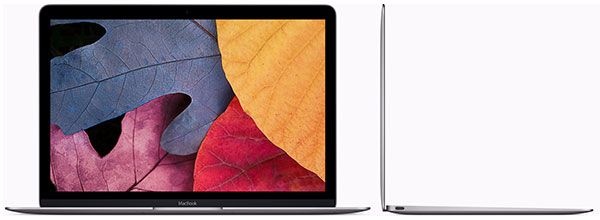
The Apple Watch may have dominated Apple's Spring Forward event earlier this week, but an unexpected new MacBook could herald the future of mobile computing. It will be available April 10, both online and at Apple retail stores and select authorized resellers.
Thinness, lightness and tomorrow's technology are its salient features.
Its 12-inch Retina display is 0.88 mm thick, and the MacBook itself is 24 percent thinner than the 11-inch MacBook Air. Its keyboard is 34 percent thinner.

The MacBook uses a butterfly mechanism that's 40 percent thinner than a traditional keyboard's scissor mechanism but is four times more stable.
It weighs only 2 pounds and doesn't have a fan.
The MacBook has only one port -- a USB-C port. It supports higher-wattage charging; USB 3.1 Gen 1 data transfer rates of 5 Gbps; and DisplayPort 1.2, so users can hook up the computer to an external high-definition TV.
"I'm a techie guy, and the thing that struck me during the event was how little space the actual computing and processing and memory parts of the system take up, and how the overall majority is battery," said Jeff Orr, a senior practice director at ABI Research.

People will rethink "the building blocks of what computing will be in the future," and the MacBook's design is pointing the way, he told TechNewsWorld. Ultimately, "the computing function will still be happening, but it will be contained in some other box that's either in your environment or on your person."
The MacBook has a stainless steel dome switch under each key, which is backlit with its own single LED light.
The Retina display uses 30 percent less energy than existing Mac notebook Retina displays, but it is equally bright.
The MacBook has an all-new Force Touch trackpad with built-in force sensors and haptic feedback. Users can customize the trackpad's feel, and the trackpad enables a new gesture called "Force Click" -- a click followed by a deeper press -- for various tasks.
"I'm a little skeptical of the haptic feedback and force-sensitive touchpad input," said Eric Smith, a senior analyst at Strategy Analytics.
"The Force is not with this force-sensitive solution. Windows 8 and 8.1 relied heavily on those features for non-touch PCs, and the result was a lot of upset customers," he told TechNewsWorld.
The same miniaturization techniques used in making Apple mobile devices were applied to create a logic board that's 67 percent smaller than that of the 11-inch MacBook.
The battery has 35 percent more capacity than traditional cells.



